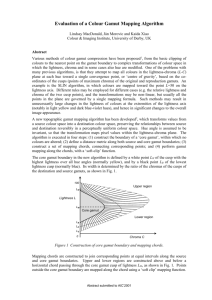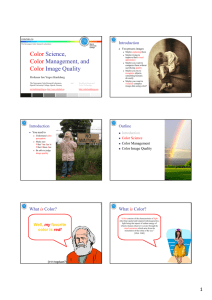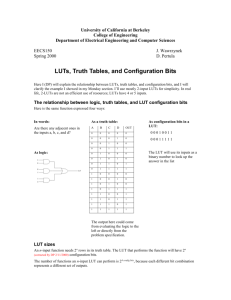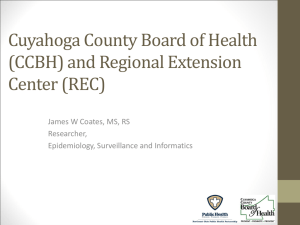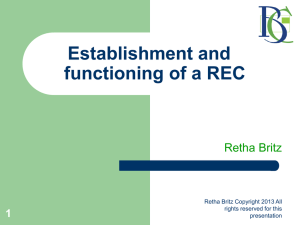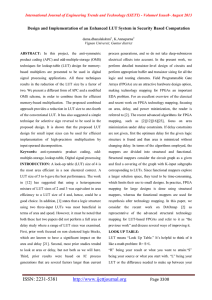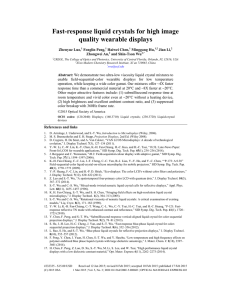Introduction to Color Management for Film and TV
advertisement
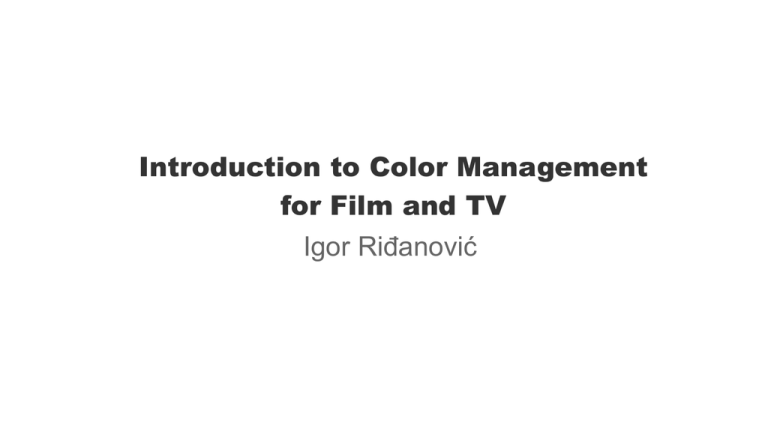
Introduction to Color Management for Film and TV Igor Riđanović Why color manage in food industry? Why color manage in retail? common source multiple display devices Why color manage in media? correct color interpretation incorrect color interpretation Why color manage in post? Why color manage in post? What is color management? Perceptually consistent color across a range of devices Consistent color within a pipeline Interoperability Why is color management important in film and TV? Brand identity Protects integrity of creative intent Maintains suspension of disbelief right wrong The nature of light and color The nature of light and color Objects and living beings have no color Light energy absorption, reflection and transmission 3D model Copyright © 2003-2013 Andrew Kator & Jennifer Legaz How do we see light and color? Rods see low light and no color Three type of cones can see color Near logarithmic response to luminance HansWerner Hunzik er How do we see light and color? S, M and L cones How do we see light and color? perceived brightness perceived brightness linear light intensity Wolphram|Alpha doubling light intensity Additive and subtractive color mixing Pko Cantus Color model and color space Color model—an abstract primary color mixing principle Color space—specific values for the primaries Color gamut—unambiguous color set defined by the primaries CIE XYZ(1931) color space CIE xy chromaticity diagram sRGB color space PAR Color space classification Device independent (example: CIE XYZ) Device dependent (example: Rec. 709) Device dependent color Examples: Traditional CMYK press Analog and Digital TV Device dependent color—numerical representation In RGB color model each pixel is represented by the additive mix of its three channels (R + B + G) R 205 G 012 B 005 R 000 G 000 B 000 R 255 G 255 B 255 Device dependent color—numerical representation Bit depth determines color precision 1 bit: fax 8 bit: grayscale 8 bit per channel: truecolor Device dependent color—numerical representation A bit is a binary numeral representing either “0” or “1” 1 bit: 2 levels 2 bit: 4 levels 10 bit: 1024 levels Device dependent color—numerical representation Values are intrinsically tied to the device R 255 G 255 B 000 R 255 G 255 B 000 sRGB color space (computer monitor) mystery color space (some handheld device) Device dependent color R 205 G 012 B 005 R 205 G 012 B 005 device 1 source device R 205 G 012 B 005 device 2 Device dependent color R 205 G 012 B 005 source device R? G? B? device 2 Device dependent color CMS R 205 G 012 B 005 source device R 212 G 008 B 010 device 2 Device dependent color Color management: Typically translates color values from one device dependent color space to another device dependent color space with respect to gamut, gamma and dynamic range Device dependent color—gamut Rec. 2020 vs. Rec. 709 color gamut GrandDrake Device dependent color—gamut Rec. 709 vs. DCI-P3 3D color gamut Device dependent color—gamma linear gamma 2.2 gamma Wolfram|Alpha Device dependent color—dynamic range higher dynamic range lower dynamic range original gamma mismatch gamut mismatch reduced dynamic range Case Study: Black and White TV (simplified) subject camera video TV set OTA broadcast Traditional TV color management Single input, single output TV camera editorial TV monitor γ = 2.5 TV camera γ = 0.45 Contemporary color management requirements Alexa 5D Vimeo editorial HD monitor graphics DVD film scan QT MOV ... VFX ... delivery Color management system Color management system Rendering intent defines how values are translated from one color gamut to another: Perceptual Saturation Relative colorimetric Absolute colorimetric Color management system Calibration and profiling: Calibration brings device to factory recommended specification Profiling builds a fingerprint of the specific device's differential from a standard color space specification Good news! Color management in most NLEs is much simpler. Color management can be more sophisticated in picture finishing and color correction systems. Sometimes aided by the operating system Can be dependent on user selected LUTs or matrices Transforming the numbers input values 1D LUT 3D LUT 3X3 matrix 0 1 2 3 4 5 output values R G B 0.034439 0.034439 0.034439 0.034712 0.034712 0.034712 0.034988 0.034988 0.034988 0.035266 0.035266 0.035266 0.035546 0.035546 0.035546 0.035828 0.035828 0.035828 ... If input R or G or B = 0 Output R or G or B = 0.034439 Transforming the numbers 1D LUT 3D LUT 3X3 matrix Rec. 709 vs. DCI-P3 3D color gamut Transforming the numbers 1D LUT 3D LUT 3X3 matrix Mathematical transformation. Not as precise as 3D LUT but adequate for many applications. How do popular programs color manage? Media Composer Creative Cloud FCP X How do popular programs color manage? tape 709 files 601/709 MC 6.x Rec. 709 TV monitor Rec. 709 sRGB files user choices How do popular programs color manage? 0 0 255 16 0 mV superblack 235 255 700 mV superwhite How do popular programs color manage? without dithering with dithering Recent developments CDL Scene referred linear ACES Special Thanks James Mathers, Digital Cinema Society Matt Feury, Avid Technologies Further reading Fraser, Murphy and Bunting (2005). Real World Color Management. Berkeley: Peachpit Press. Graham, S. (2002). The Science of Imaging: An Introduction. Bristol: IOP Publishing. Bloch, C. (2007). The HDRI Handbook. Santa Barbara: Rocky Nook. Kennel, G. (2007). Color and Mastering for Digital Cinema. Burlington: Focal Press. www.poynton.com www.lightillusion.com This presentation is available for download at HDhead.com.

